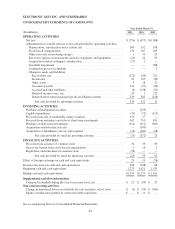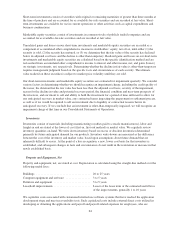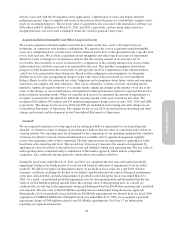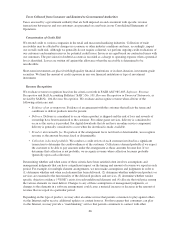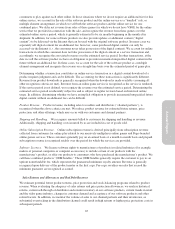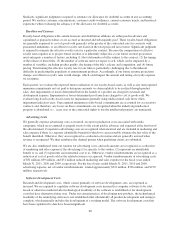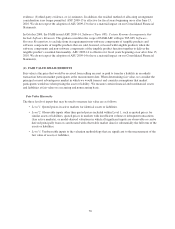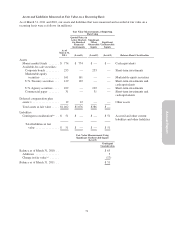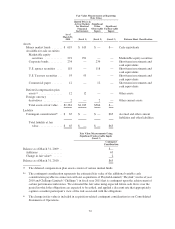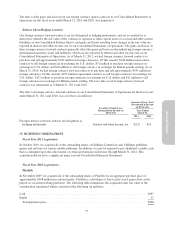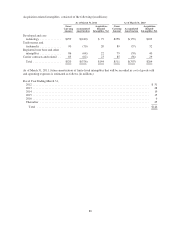Electronic Arts 2011 Annual Report Download - page 146
Download and view the complete annual report
Please find page 146 of the 2011 Electronic Arts annual report below. You can navigate through the pages in the report by either clicking on the pages listed below, or by using the keyword search tool below to find specific information within the annual report.evidence, (b) third-party evidence, or (c) estimates. In addition, the residual method of allocating arrangement
consideration is no longer permitted. ASU 2009-13 is effective for fiscal years beginning on or after June 15,
2010. We do not expect the adoption of ASU 2009-13 to have a material impact on our Consolidated Financial
Statements.
In October 2009, the FASB issued ASU 2009-14, Software (Topic 985):Certain Revenue Arrangements that
Include Software Elements. This guidance modifies the scope of FASB ASC subtopic 985-605, Software-
Revenue Recognition, to exclude from its requirements non-software components of tangible products and
software components of tangible products that are sold, licensed, or leased with tangible products when the
software components and non-software components of the tangible product function together to deliver the
tangible product’s essential functionality. ASU 2009-14 is effective for fiscal years beginning on or after June 15,
2010. We do not expect the adoption of ASU 2009-14 to have a material impact on our Consolidated Financial
Statements.
(2) FAIR VALUE MEASUREMENTS
Fair value is the price that would be received from selling an asset or paid to transfer a liability in an orderly
transaction between market participants at the measurement date. When determining fair value, we consider the
principal or most advantageous market in which we would transact and consider assumptions that market
participants would use when pricing the asset or liability. We measure certain financial and nonfinancial assets
and liabilities at fair value on a recurring and nonrecurring basis.
Fair Value Hierarchy
The three levels of inputs that may be used to measure fair value are as follows:
•Level 1. Quoted prices in active markets for identical assets or liabilities.
•Level 2. Observable inputs other than quoted prices included within Level 1, such as quoted prices for
similar assets or liabilities, quoted prices in markets with insufficient volume or infrequent transactions
(less active markets), or model-derived valuations in which all significant inputs are observable or can be
derived principally from or corroborated with observable market data for substantially the full term of the
assets or liabilities.
•Level 3. Unobservable inputs to the valuation methodology that are significant to the measurement of the
fair value of assets or liabilities.
70




